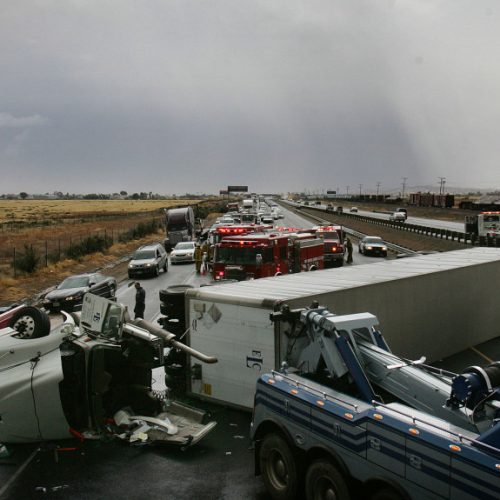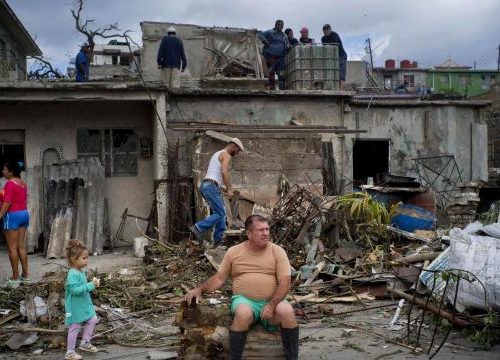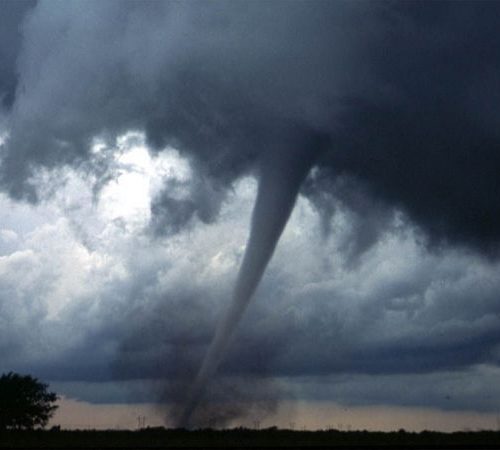CHEYENNE – “It was the biggest and most destructive thing I’ve ever seen. And I’ve been to Vietnam. I thought I had seen it all.”
Those were the words of Carl Lowery, a member of Wyoming Search and Rescue, in the July 17, 1979, edition of the Wyoming Eagle, describing the most destructive tornado in Wyoming’s history, which hit Cheyenne 40 years ago.
The Eagle was a predecessor of the Wyoming Tribune Eagle.
In the mid-afternoon hours of July 16, 1979, an F3 tornado touched down and traveled across a northern section of Cheyenne, resulting in 40 injuries and one fatality – a 14-month-old boy.
Damages were estimated at $25 million, making it the costliest storm in Wyoming since official record-keeping began in 1950. The majority of the damage was in residential sections of the Buffalo Ridge subdivision and a nearby mobile home park. The tornado destroyed an estimated 200 homes.
Damage at the Cheyenne airport included four C-130 aircraft, other National Guard equipment and city-owned hangers.
“It picked up a 30-foot Winnebago and set it down in the middle of a living room,” said Lowery, who lived on Robitaille Court.
Lowery told the newspaper that day he helped load about 20 people into ambulances in the first 90 minutes after the tornado struck.
“It’s sad,” he said, “There was a lady in front of her house, on her hands and knees, crying. Friends were trying to comfort her. Beneath her was her dog, a collie, (which was dead).”
The tornado was first reported at 3:10 p.m. by a National Weather Service employee west of Cheyenne. It formed near the intersection of Vandehei Avenue and Valley View Road, and tracked to the east for about nine miles. It was on the ground for about 30 minutes.
Robert G. Beebe, who was meteorologist-in-charge of the NWS Cheyenne office then, told the Wyoming Eagle he watched the tornado develop.
“It was a very strange one,” he said. “It began as a dust whirl on the ground. Someone yelled, ‘I think we have a tornado.’ I ran out and watched it momentarily, looking for rotation. It was still near the governor’s (residence), or over the golf course.”
Beebe said he then shouted, “Let’s get the warnings out.”
He said they then called 911, three radio stations and the television station, and put the message on the weather wire to all media.
“Then,” he said, “our telephones went dead.”
The main reason for the development of the tornado, according to the Weather Service, was an outflow boundary from previous thunderstorms moving south across western Nebraska. In addition, abundant mid-level moisture spread from the northeast, and the presence of low-level wind shear enhanced the risk for severe thunderstorms.
“No one ever thought we would ever have a tornado in Cheyenne, Wyoming,” then-Mayor Don Erickson said in an Associated Press story, “but we had one.”
Crystal Worley, a meteorologist with the National Weather Service in Cheyenne, said Tuesday that weather technology, such as Doppler and dual-polarization radar, both of which are used to issue tornado warnings, has changed significantly since 1979.
“Back then, tornado warning lead times were about five minutes,” Worley said. “Now, tornado warning lead times are about 10 to 12 minutes. That’s doesn’t seem like a lot of time, but when you compare it to how little time we had 40 years ago between the warning and when the tornado would hit, it’s a big deal.”
The dual-polarization radar, or dual-pol, can better determine the type and intensity of precipitation and how much may fall. It can also help meteorologists tell the difference between smoke, birds, bats and bugs, and confirm that tornadoes are on the ground, causing damage.
According to the National Severe Storms Laboratory, dual-pol is the most significant enhancement made to the nation’s radar network since Doppler radar was first installed in the early 1990s.
Cheyenne’s radar capability in 1979 was limited, according to Worley, consisting of a black-and-white still image from a radar facility located in Alliance, Nebraska.
Worley said social media serves as another outlet to get information, such as a storm’s location and threat level, out to the public quickly.
“We certainly didn’t have that capability 40 years ago,” she said.
The Weather Service estimates that if the 1979 tornado struck Cheyenne today and took the same path, about 770 homes and 146 businesses would be impacted. The tornado also would have impacted Frontier Mall, which opened in 1981.
In addition, a population of 1,856 people would be impacted by the same tornado today.
By Steve Knight (2019, July 17) Wyoming Tribune Eagle




